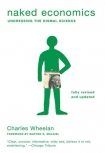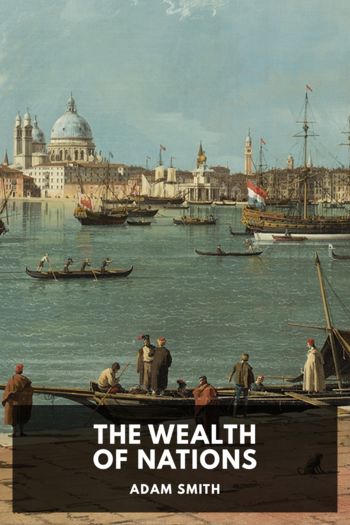Naked Economics, Wheelan, Charles [open ebook .txt] 📗

Book online «Naked Economics, Wheelan, Charles [open ebook .txt] 📗». Author Wheelan, Charles
All of which brings us to our final conundrum: How does the Federal Reserve inject money into a private banking system? Does Ben Bernanke print $100 million of new money, load it into a heavily armored truck, and drive it to a Citibank branch? Not exactly—though that image is not a bad way to understand what does happen.
Ben Bernanke and the FOMC do create new money. In the United States, they alone have that power. (The Treasury merely mints new currency and coins to replace money that already exists.) The Federal Reserve does deliver new money to banks like Citibank. But the Fed does not give funds to the bank; it trades the new money for government bonds that the banks currently own. In our metaphorical example, the Citibank branch manager meets Ben Bernanke’s armored truck outside the bank, loads $100 million of new money into the bank’s vault, and then hands the Fed chairman $100 million in government bonds from the bank’s portfolio in return. Note that Citibank has not been made richer by the transaction. The bank has merely swapped $100 million of one kind of asset (bonds) for $100 million of a different kind of asset (cash, or, more accurately, its electronic equivalent).
Banks hold bonds for the same reason individual investors do; bonds are a safe place to park funds that aren’t needed for something else. Specifically, banks buy bonds with depositors’ funds that are not being loaned out. To the economy, the fact that Citibank has swapped bonds for cash makes all the difference. When a bank has $100 million of deposits parked in bonds, those funds are not being loaned out. They are not financing houses, or businesses, or new plants. But after Ben Bernanke’s metaphorical armored truck pulls away, Citibank is left holding funds that can be loaned out. That means new loans for all the kinds of things that generate economic activity. Indeed, money injected into the banking system has a cascading effect. A bank that swaps bonds for money from the Fed keeps some fraction of the funds in reserves, as required by law, and then loans out the rest. Whoever receives those loans will spend them somewhere, perhaps at a car dealership or a department store. That money eventually ends up in other banks, which will keep some funds in reserve and then make loans of their own. A move by the Fed to inject $100 million of new funds into the banking system may ultimately increase the money supply by 10 times as much.
Of course, the Fed chairman does not actually drive a truck to a Citibank branch to swap cash for bonds. The FOMC can accomplish the same thing using the bond market (which works just like the stock market, except that bonds are bought and sold). Bond traders working on behalf of the Fed buy bonds from commercial banks and pay for them with newly created money—funds that simply did not exist twenty minutes earlier. (Presumably the banks selling their bonds will be those with the most opportunities to make new loans.) The Fed will continue to buy bonds with new money, a process called open market operations, until the target federal funds rate has been reached.
Obviously what the Fed giveth, the Fed can take away. The Federal Reserve can raise interest rates by doing the opposite of everything we’ve just discussed. The FOMC would vote to raise the discount rate and/or the target fed funds rate and issue an order to sell bonds from its portfolio to commercial banks. As banks give up lendable funds in exchange for bonds, the money supply shrinks. Money that might have been loaned out to consumers and businesses is parked in bonds instead. Interest rates go up, and anything purchased with borrowed capital becomes more expensive. The cumulative effect is slower economic growth.
The mechanics of the Fed’s handiwork should not obscure the big picture. The Federal Reserve’s mandate is to facilitate a sustainable pace of economic growth. But let’s clarify how difficult that job really is. First, we are only guessing at the rate at which the economy can expand without igniting inflation. One debate among economists is over whether or not computers and other kinds of information technology have made Americans significantly more productive. If so, as Mr. Greenspan suggested during his tenure, then the economy’s potential growth rate may have gone up. If not, as other economists have argued convincingly, then the old speed limit still applies. Obviously it is hard to abide by a speed limit that is not clearly posted.
But that is only the first challenge. The Fed must also reckon what kind of impact a change in interest rates will have and how long it will take. Will a quarter-point rate cut cause twelve people to buy new PT Cruisers in Des Moines or 421? When? Next week or six months from now? Meanwhile, the Fed has the most control over short-term interest rates, which may or may not move in the same direction as long-term rates. Why can’t Ben Bernanke work his magic on long-term rates, too? Because long-term rates do not depend on the money





Comments (0)